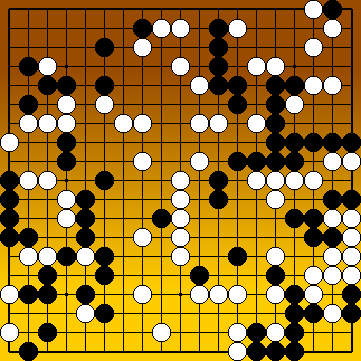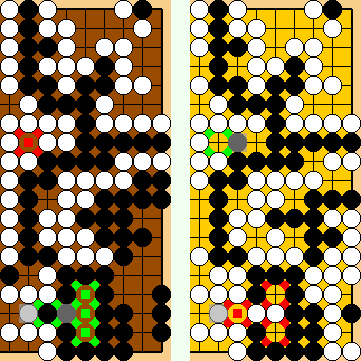New Story Line 2022
Joachim's Rediscovered Oki in the Hanezeki
|
Joachim Meinhardt rediscovered an oki in the hanezeki for use during its dissolution within the classical solution sequence, which had merely been used earlier by Fujisawa Hideyuki 9p in the context of another semeai within a subvariation. The reason for not considering this move may have been the move order chosen by Fujisawa Hideyuki in occupying Black's liberties on the right side of the board, which was discussed in the previous section. After determining the value of this move we will realise that White had missed an opportunity to win the game in the "classical" environment. | |
|
Referenced by ( Let's go back in time and enter the world of amateurs ... |
|
Please note that the board position already includes Jérôme Hubert's and Joachim's adjustments of the order of moves in the mutual occupation of opponent's liberties before ( For further details, please refer to section "Jérôme Hubert's Correction of the Mutual Occupation of Opponent's Liberties" ( It may have been helpful for Joachim that White had already made her maximum profit in the right centre in this constellation, so that he no longer had to waste any thought on optimising this issue. As we already saw before, White benefited from Joachim's Rediscovered Oki even in the case of Fujisawa Hideyuki's order of moves, but in this case there was still the distraction of the not yet secured White territory in the right centre ... For further details, please refer to section "Jérôme Hubert's Correction of the Mutual Occupation of Opponent's Liberties" ( |
|
He is unable to connect at
|
|
White will start the endgame on the left side of the board with the atari Finally, he must resume the interrupted dissolving of the Hanezeki with |
|
About two decades earlier, in the dawn of time ... |
|
|
|
|
|
However, this move seems to have been seen primarily as an eye-stealing tesuji, but less as a way to destroy Black territory. White must not let Black occupy this point, as the fight in the lower left corner would end immediately, clearly decided in Black's favour. |
|
If White captures at |
|
Territory in the Capture Variation: White:
= 42 points in total Black:
= 65 points in total White lost 23 points through the dissolving of the hanezeki. |
|
Let's return to Fujisawa Hideyuki's classical solution to the problem ... |
|
|
|
... |
|
Please note that one of the reasons for this could be the occupation of three worthless points ( For further details, please refer to section "Jérôme Hubert's Correction of the Mutual Occupation of Opponent's Liberties" (
He is unable to connect at |
|
... |
|
He adds in his comment that the endgame on the left side of the board will start with The best assumption of the classical endgame at the left side will allow White to give atari at For further details, please refer to section "Jérôme Hubert's Correction of the Mutual Occupation of Opponent's Liberties" ( |
|
Let's return to the world of amateurs, and calculate the effect of Joachim's Rediscovered Oki ... |
|
Territory in the marked areas (in the Capture Variation) ... Fujisawa Hideyuki (best guess; at left):
= In total, Black has two points. Joachim's Rediscovered Oki (at right):
= In total, White has one point. White gained three points through Joachim's Rediscovered Oki, compared to the supposed endgame sequence in Fujisawa Hideyuki's line of play. Fujisawa Hideyuki gave the result of his Capture Variation as "Black + 2", so ... Joachim's Rediscovered Oki would White let win the game by one point! Correct order of liberty occupying moves before provided. |
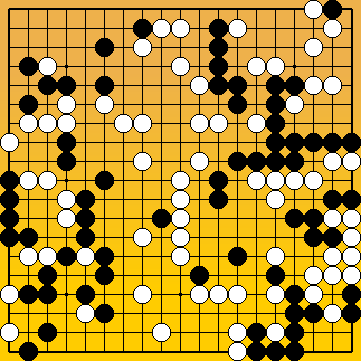
 2025c
2025c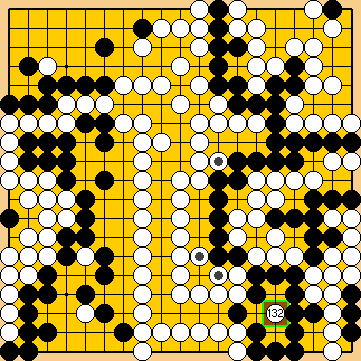
 : (
: ( 2022MainLine
2022MainLine ).
). 2041
2041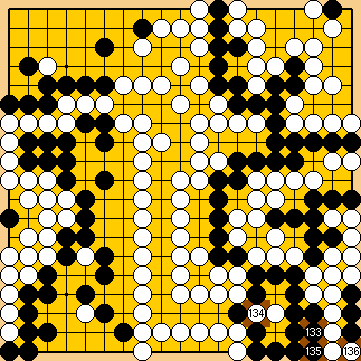
 :
: , instead, intending to capture White's just played stone.
, instead, intending to capture White's just played stone. :
: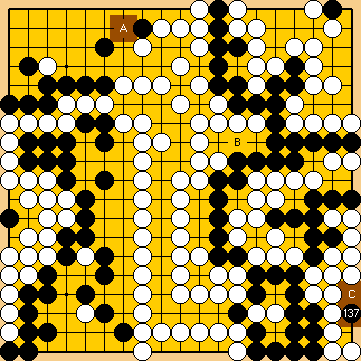
 :
: of Fujisawa Hideyuki 9p.
of Fujisawa Hideyuki 9p. in the right centre.
in the right centre. .
.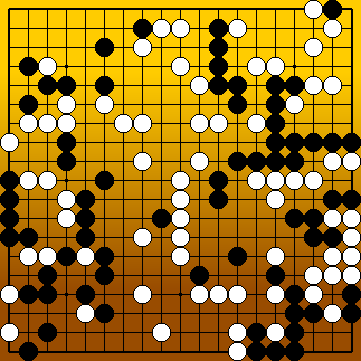
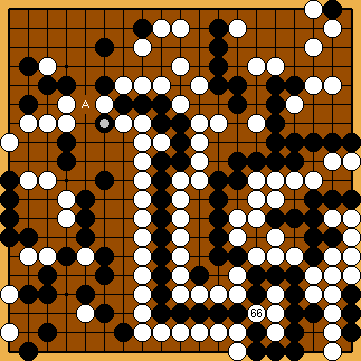
 :
: in the course of the Crosscut Sequence in the upper left centre.
in the course of the Crosscut Sequence in the upper left centre.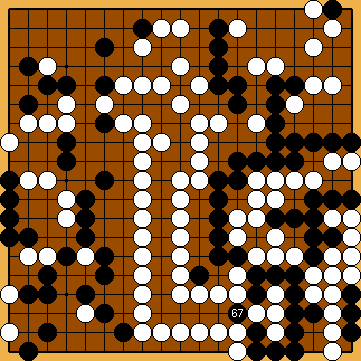
 :
: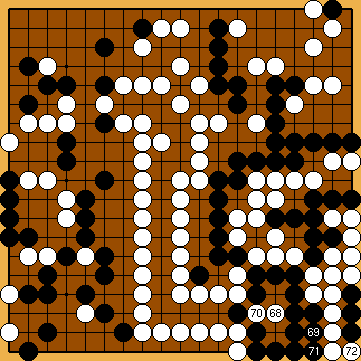
 :
: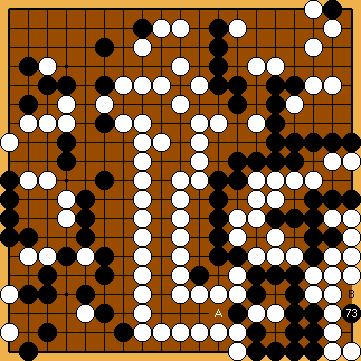
 :
: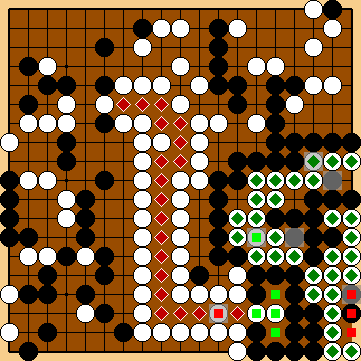
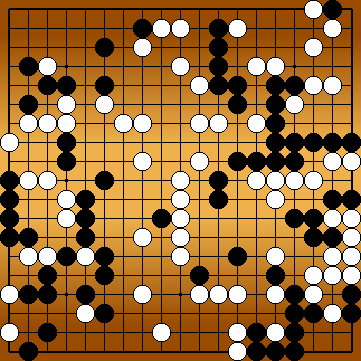
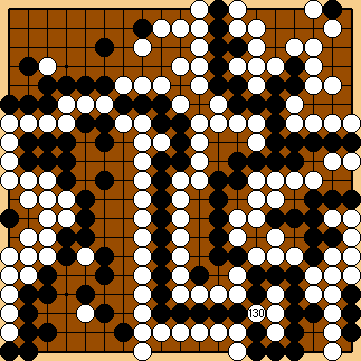
 :
: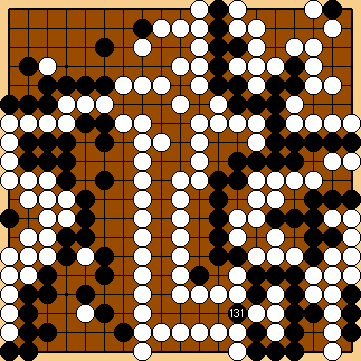
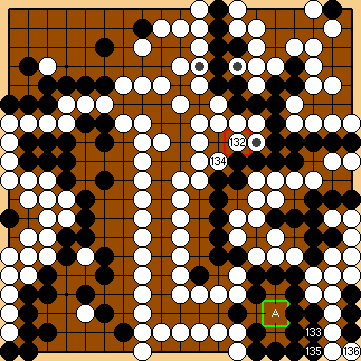
 , instead, as his large group in the upper right is quite short of liberties.
, instead, as his large group in the upper right is quite short of liberties.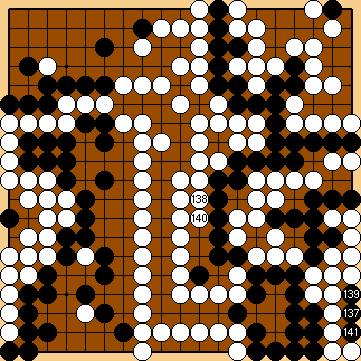
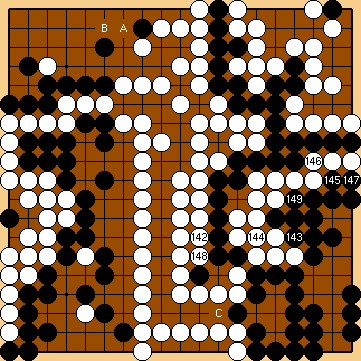
 :
: in the lower right.
in the lower right.